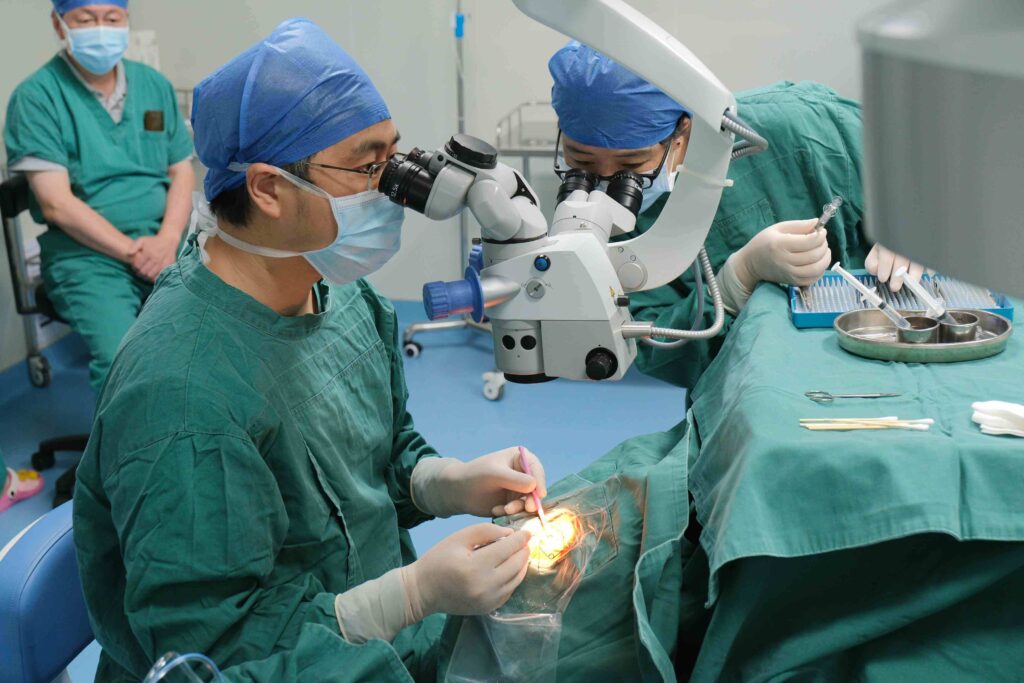If you’ve ever fumbled for your glasses first thing in the morning or struggled with dry contact lenses during a long day, you’ve probably dreamed about what it would be like to see clearly—without any help. LASIK surgery has made that dream a reality for millions, but I understand that the idea of eye surgery can still feel intimidating.
As someone who has walked many patients through this process, I want to take you on a step-by-step journey, so you know exactly what to expect—from the first consultation to that exciting moment you open your eyes and see the world in crisp, vivid detail.
Step 1: Understanding LASIK
LASIK (Laser-Assisted In Situ Keratomileusis) is a type of vision correction surgery that reshapes the cornea, the clear front surface of the eye. When the cornea has the right shape, light focuses directly on the retina, giving you sharp, clear vision.
It can correct nearsightedness, farsightedness, and astigmatism for many people. However, not everyone is a candidate. Factors like corneal thickness, prescription stability, and overall eye health will determine if perfect LASIK surgery is right for you.
See more: Recognizing the Early Signs of Glaucoma: Key Symptoms to Watch For
Step 2: The Initial Consultation
Your LASIK journey begins with a detailed consultation. This is not just a simple vision test—it’s a comprehensive evaluation.
Your doctor will:
- Map the exact shape of your cornea using advanced imaging.
- Measure your prescription with precision.
- Check for conditions like dry eye or early cataracts.
- Review your medical history and lifestyle needs.
This is also the perfect time to ask questions and share any concerns you may have. My patients often tell me they feel much more confident after this first visit because they truly understand their options.
Step 3: Preparing for Surgery
If you’re a good candidate, your doctor will give you a short preparation checklist. Most patients need to:

- Stop wearing contact lenses for a few days or weeks before surgery, depending on the type, so the cornea returns to its natural shape.
- Avoid eye makeup or creams around the eyes the day of surgery.
- Arrange a ride home since your vision will be a bit hazy right after the procedure.
These small steps make a big difference in ensuring a smooth, safe outcome.
Step 4: The Day of the Procedure
On the big day, expect the entire visit to last about an hour, though the actual laser time is usually just a few minutes.
Here’s what happens:
- You’ll get numbing eye drops, so you won’t feel pain—just some gentle pressure.
- A small flap is made in the outer layer of your cornea.
- The laser reshapes your cornea in precise, painless bursts.
- The flap is placed back into position, where it naturally heals without stitches.
Many patients are surprised by how quick and comfortable the process is.
Step 5: Recovery and Healing
After surgery, your vision may be blurry or hazy for the first few hours. Some people experience mild burning, itching, or watering—similar to getting soap in the eye—but this usually fades quickly.
You’ll need to use special eye drops to prevent infection and dryness, avoid rubbing your eyes, and wear protective shields at night for the first week. Most patients return to normal activities within a day or two, with vision continuing to sharpen over the next few weeks.
Step 6: Life After Perfect LASIK
This is where the magic happens. Imagine waking up the morning after surgery and being able to see the alarm clock clearly—without glasses.
Colors often look brighter, reading becomes effortless, and outdoor activities feel more freeing. The emotional impact is just as powerful as the physical one. Many of my patients tell me they feel younger, more confident, and more independent.
Common Questions Answered
Does LASIK hurt?
No. You may feel some pressure during the procedure, but the numbing drops prevent pain.
How soon will I see results?
Most patients notice clearer vision within 24 hours, though it continues to improve for weeks.
Is LASIK permanent?
The corneal reshaping is permanent, but natural age-related changes to vision can still happen later in life.
Conclusion
Perfect LASIK surgery is not just about sharper vision—it’s about reclaiming comfort, convenience, and confidence in your everyday life.
If you’ve been wondering whether it’s right for you, the safest next step is to have an honest, detailed conversation with your eye doctor. With the right preparation, guidance, and care, you could be on your way to seeing the world with clarity you haven’t experienced in years.

